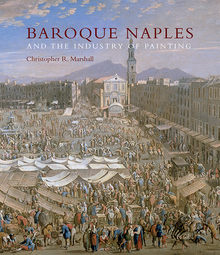The Invention of the Italian Renaissance Printmaker
WARNING
You are viewing an older version of the Yalebooks website. Please visit out new website with more updated information and a better user experience: https://www.yalebooks.com
Evelyn Lincoln

Read this book online via the A&AePortal, our art and architectural history eBook platform. To learn more about how to access this book, please contact us.
Out of Print
Before the age of multimedia, how did the invention of a new technology affect the careers of Renaissance artists? In this groundbreaking book Evelyn Lincoln examines the formation of the new career of printmaker during the late fifteenth century and throughout the sixteenth century in Italy. She focuses particularly on the practical relationship between the ancient skill of drawing and the more modern techniques of artisans who made prints by engraving images into copper or wood. Looking closely at the widely diverse prints issuing from early Italian presses, Lincoln shows how Italian social, religious, and educational practices are revealed in these printed images, demonstrating how the printmaker’s training and experience affected the look of the finished work.
Lincoln builds her discussion around the work of three printmakers practicing at different times and under varying economic opportunities and restraints: Andrea Mantegna in Mantua, Domenico Beccafumi in Siena, and Diana Mantuana (Diana Scultori) in Rome. She shows how the occupational origins of early printmakers and publishers affected how they thought about the functions of multiple images. This account of their work—at powerful courts, in a small republic, and in a cosmopolitan city—sets the prints in the context of related paintings, sculpture, and architecture, describing a period when printmaking opened up new ways to make a living and transformed the mechanisms of Renaissance visual culture.
Lincoln builds her discussion around the work of three printmakers practicing at different times and under varying economic opportunities and restraints: Andrea Mantegna in Mantua, Domenico Beccafumi in Siena, and Diana Mantuana (Diana Scultori) in Rome. She shows how the occupational origins of early printmakers and publishers affected how they thought about the functions of multiple images. This account of their work—at powerful courts, in a small republic, and in a cosmopolitan city—sets the prints in the context of related paintings, sculpture, and architecture, describing a period when printmaking opened up new ways to make a living and transformed the mechanisms of Renaissance visual culture.
Evelyn Lincoln is assistant professor of the history of art and architecture at Brown University.
“In addition to clear and thorough descriptions of the technical aspects of various forms of printmaking, Lincoln’s ability to move between printmaking and painting is one of the major contributions of the book. By bringing the two media together rather than treating prints as an autonomous artistic activity, Lincoln provides new insights into the development of style in that medium. . . . A beautifully produced book with exceptionally clear black-and-white and superb color illustrations.”—Choice
“Lavishly illustrated, beautifully presented, and thoroughly researched. . . . A scholarly book replete with extensive footnotes, interesting appendixes, and fulsome bibliography.”—George James Grinnell, History: Reviews of New Books
“Lincoln is a true scholar, and the book is loaded with interesting material for serious students of printmaking and art history. . . . This is a well-researched book for anyone curious about this period in history.”—Library Journal
“A study of interest to all scholars of Renaissance visual culture. . . . A welcome addition to what is becoming an increasingly rich and broad field of inquiry.”—Sharon Gregory, Renaissance Quarterly
“One of the richest threads throughout this book is the way that it situates the printmakers among their colleagues, reminding us how printmakers did their work in co-operation with goldsmiths, embroiderers, architects, painters, and book printers. This lovely book holds the printmakers’ works of art to the light in order to illuminate the art of work in Quattrocento and Cinquecento Italy.”—Sixteenth Century Journal
“Evelyn Lincoln shows in this fine book, a detailed study of prints can convey a new understanding of the production of visual images. Such scrutiny leads not to fine art in the modern sense, but to an understanding of art production and its uses in the changing visual culture of the fifteenth and sixteenth centuries.”—Pamela O. Long, Technology & Culture
ISBN: 9780300080414
Publication Date: August 11, 2000
Publication Date: August 11, 2000
216 pages, x
115 b/w + 35 color illus.
115 b/w + 35 color illus.









